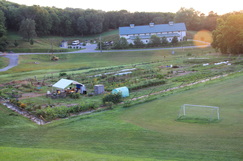
Last week, I participated in a workshop called "Kickstart Your School Garden." Why would the instructional technology resource teacher attend a gardening workshop, you ask? For starters, she believes we need to get closer to the source of the foods we put in our bodies, and that we need to take better care of our Earth, so that our children and grandchildren can inherit a better planet (and life). What better place to make that happen than in a school garden? Beyond those beliefs, there are many ways to make instructional connections with any content, where technology plays a role, and plenty of places to connect a garden to learning objectives.
Some of those connections are simple, like writing about the gardening experience. Whether the writing happens on paper or on a device, the writing and the gardening can have deeper learning for the student if we bring in the real world components. Perhaps there is an area of the schoolyard that has become an eyesore, where students could generate solutions and implement them. This would require thinking, collaborating, planning, writing, discussing....not just on a piece of paper for the teacher to read, but in a format that would be presented to the school principal, and possibly to a parent group, school board, or division administrators. There are a multitude of digital tools for conveying ideas to a group of people, from impressive poster/chart tools to blogs to videochats (Skype, etc.). Perhaps they need to send out an electronic survey to gather opinions or ideas or garnish support for their garden. Pictures of the garden spot, drawings of improvement ideas, and charts of needs to accomplish the transformation could be compiled in a digital story. Even if the approval process to make your garden happen is simple and does not require these tools and processes, the learning experience can be enriched by real life applications, that might also involve technology.
Tamra Willis, director of the Environment-based Learning program at Mary Baldwin College, talked to the group in the afternoon about curriculum connections. She reminded us to keep the learning at the forefront of all our planning. Beware of cool activities for activities' sake...make sure the activities support the learning goals. Also decide what evidence you will have of the success of those learning goals. When students present to an outside audience through blogs, blended digital and personal presentations (like to school board, parent group, administrators, etc.), or through other methods, the students are more vested in the learning process, and learning is deeper. We spent some time working in groups on some possible Big Ideas for the various situations back at our schools.
Later, as the students are learning about plant growth in their garden, they may need to take measurements and record them, or monitor experiments to compare data and learn about optimal conditions for their plants. From the five senses to caterpillars and life cycles to historical crops (think Three Sisters) to writing riddles and poems to math galore...the possibilities for connection and real life learning are boundless in the garden. It is very exciting to see plants sprout from seeds or see plants transplanted and thrive. The librarian in me, too, knows that there are boundless personal stories that will happen with everyone of those connections. Not to mention that there are many stories, as well as nonfiction books, in the library that connect to many things that could be learned in the garden experience.
Some of those connections are simple, like writing about the gardening experience. Whether the writing happens on paper or on a device, the writing and the gardening can have deeper learning for the student if we bring in the real world components. Perhaps there is an area of the schoolyard that has become an eyesore, where students could generate solutions and implement them. This would require thinking, collaborating, planning, writing, discussing....not just on a piece of paper for the teacher to read, but in a format that would be presented to the school principal, and possibly to a parent group, school board, or division administrators. There are a multitude of digital tools for conveying ideas to a group of people, from impressive poster/chart tools to blogs to videochats (Skype, etc.). Perhaps they need to send out an electronic survey to gather opinions or ideas or garnish support for their garden. Pictures of the garden spot, drawings of improvement ideas, and charts of needs to accomplish the transformation could be compiled in a digital story. Even if the approval process to make your garden happen is simple and does not require these tools and processes, the learning experience can be enriched by real life applications, that might also involve technology.
Tamra Willis, director of the Environment-based Learning program at Mary Baldwin College, talked to the group in the afternoon about curriculum connections. She reminded us to keep the learning at the forefront of all our planning. Beware of cool activities for activities' sake...make sure the activities support the learning goals. Also decide what evidence you will have of the success of those learning goals. When students present to an outside audience through blogs, blended digital and personal presentations (like to school board, parent group, administrators, etc.), or through other methods, the students are more vested in the learning process, and learning is deeper. We spent some time working in groups on some possible Big Ideas for the various situations back at our schools.
Later, as the students are learning about plant growth in their garden, they may need to take measurements and record them, or monitor experiments to compare data and learn about optimal conditions for their plants. From the five senses to caterpillars and life cycles to historical crops (think Three Sisters) to writing riddles and poems to math galore...the possibilities for connection and real life learning are boundless in the garden. It is very exciting to see plants sprout from seeds or see plants transplanted and thrive. The librarian in me, too, knows that there are boundless personal stories that will happen with everyone of those connections. Not to mention that there are many stories, as well as nonfiction books, in the library that connect to many things that could be learned in the garden experience.
The workshop last week took place at the Allegheny Mountain Institute Farm at VSDB (Virginia School for the Deaf and Blind) here in Staunton. They have an impressive program that connects the students at VSDB to gardening in many ways. They have raised beds with vegetables and flowers right in the heart of the campus, which is as lovely as it is functional. Sunflowers abound, so I photographed them (over and over..could not get enough!).
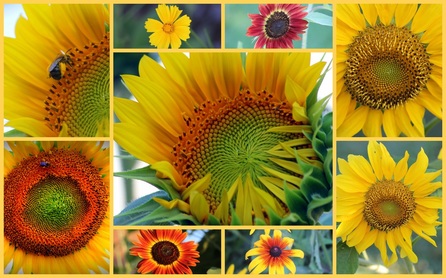
So many varieties of Sunflowers!
Raised beds on the campus by the buildings with vegetables and flowers were so visually inviting and so functional that they made me want to do this at school and at home. Our workshop instructors talked about changing these beds to be taller to give better access to students with limited mobility.
Raised beds on the campus by the buildings with vegetables and flowers were so visually inviting and so functional that they made me want to do this at school and at home. Our workshop instructors talked about changing these beds to be taller to give better access to students with limited mobility.
The main work of our workshop took place at the "farm" garden, located where my boys used to play soccer. The shelter kept the rain off of us the first day and kept the sun off of us the second day. We learned about things like soil composition, nutrients (and the cycle of nutrients from soil to plant to our bodies), tips to work with soil and give it the optimal growing environment, sheet mulching, microbes, worms....and more.
Sheet Mulching was new to me, and we started an area of sheet mulching for the school to put in a riparian buffer along the creek/tributary near the garden that feeds into Lewis Creek. This is an amazingly simple way to reclaim a grassy or weedy area for a new purpose.
1) Start with a thin layer of compost
2) Cover the area with a double layer of cardboard, overlapping the pieces a few inches
3) Wet it down well
4) Add about a three inch layer of mulch
Do this in the Fall, and by Spring, you should be able to dig a hole through to add small plants. You could also use a geotextile sheet (weedblock fabric) with this method.
Direct seeding for some plants (in soil that has been enriched with compost and protected through the winter with some sort of mulch) was more familiar to me. Read the seed packets to learn when to plant, how far apart to plant, and how deep to plant. General rule of thumb, plant the seeds twice as deep as the seed is wide. We planted some lettuce that will hopefully grow and be used by the VSDB cafeteria on their salad bar.
1) Start with a thin layer of compost
2) Cover the area with a double layer of cardboard, overlapping the pieces a few inches
3) Wet it down well
4) Add about a three inch layer of mulch
Do this in the Fall, and by Spring, you should be able to dig a hole through to add small plants. You could also use a geotextile sheet (weedblock fabric) with this method.
Direct seeding for some plants (in soil that has been enriched with compost and protected through the winter with some sort of mulch) was more familiar to me. Read the seed packets to learn when to plant, how far apart to plant, and how deep to plant. General rule of thumb, plant the seeds twice as deep as the seed is wide. We planted some lettuce that will hopefully grow and be used by the VSDB cafeteria on their salad bar.
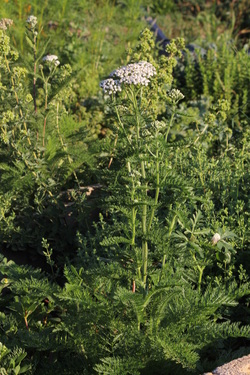 Grown, Blooming Yarrow Plant
Grown, Blooming Yarrow Plant Yarrow can have medicinal uses. For example, you can pick a leaf, chew it just a little, and apply it to a cut for healing (a bandage would hold it there for continued benefit). We planted White Yarrow like this one, but there are yellow and red varieties, as well. Red is pictured below.
Best of all, we planted Red Russian Kale seeds to take home with us! We planted 8 seeds, 2 in each little pot of the planter. My kale sprouted within 5 days, and in 8 days are growing nicely!
A garden feature that interested me was the electric fence in the picture below, which was a design I had never seen. It seems pretty ingenious but simple to me: 1) tilted out to discourage deer from jumping and 2) the barrier on the ground to discourage grass and weeds, which would otherwise grow and likely short out the fence. You don't necessarily need a fence, but you would need to consider what kinds of animals and/or pests would be attracted to the garden. You can also see where some sunflowers "volunteered" outside the fence. I like volunteers!
Below is a slide show of various things of interest to me in the garden. Wave your mouse over the large picture to see the play button or the navigation arrows. There are several more pictures than the sidebar indicate.
Day 2 of the workshop was a half-day about composting...very interesting...another blog for another day, perhaps.





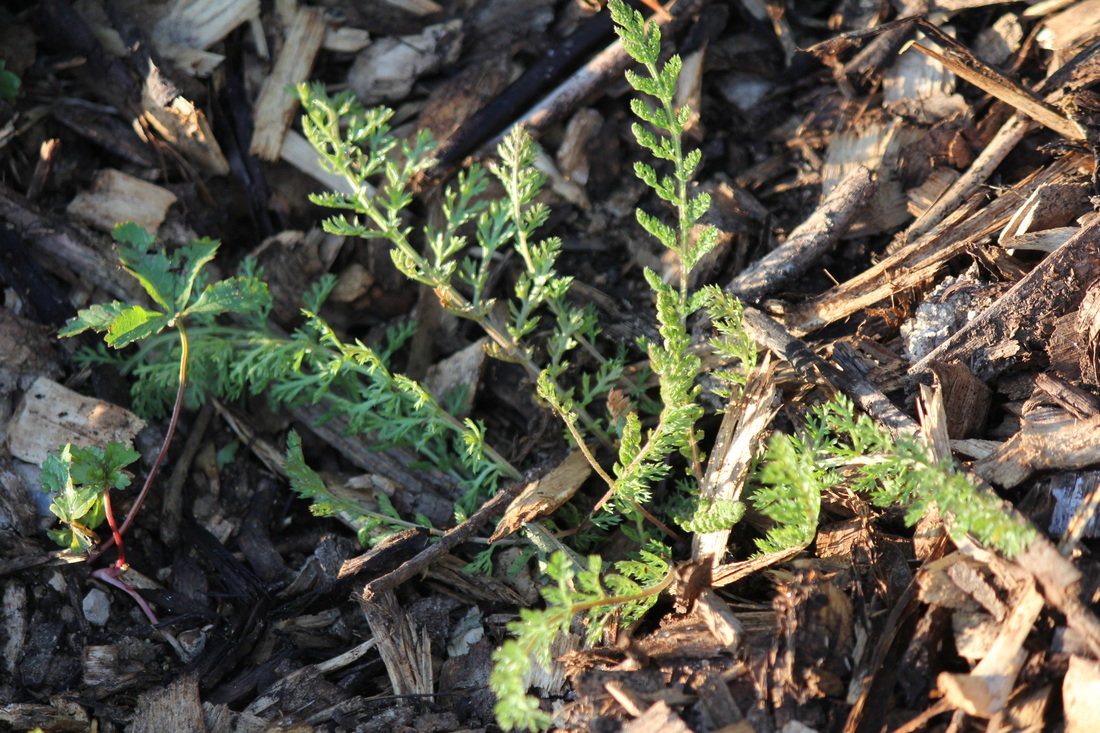
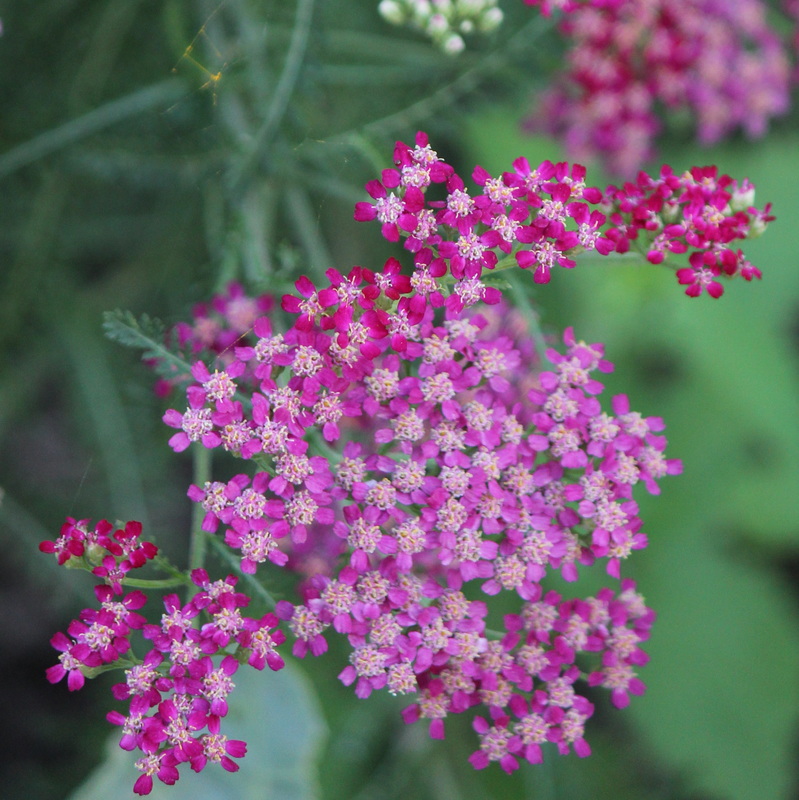



 RSS Feed
RSS Feed